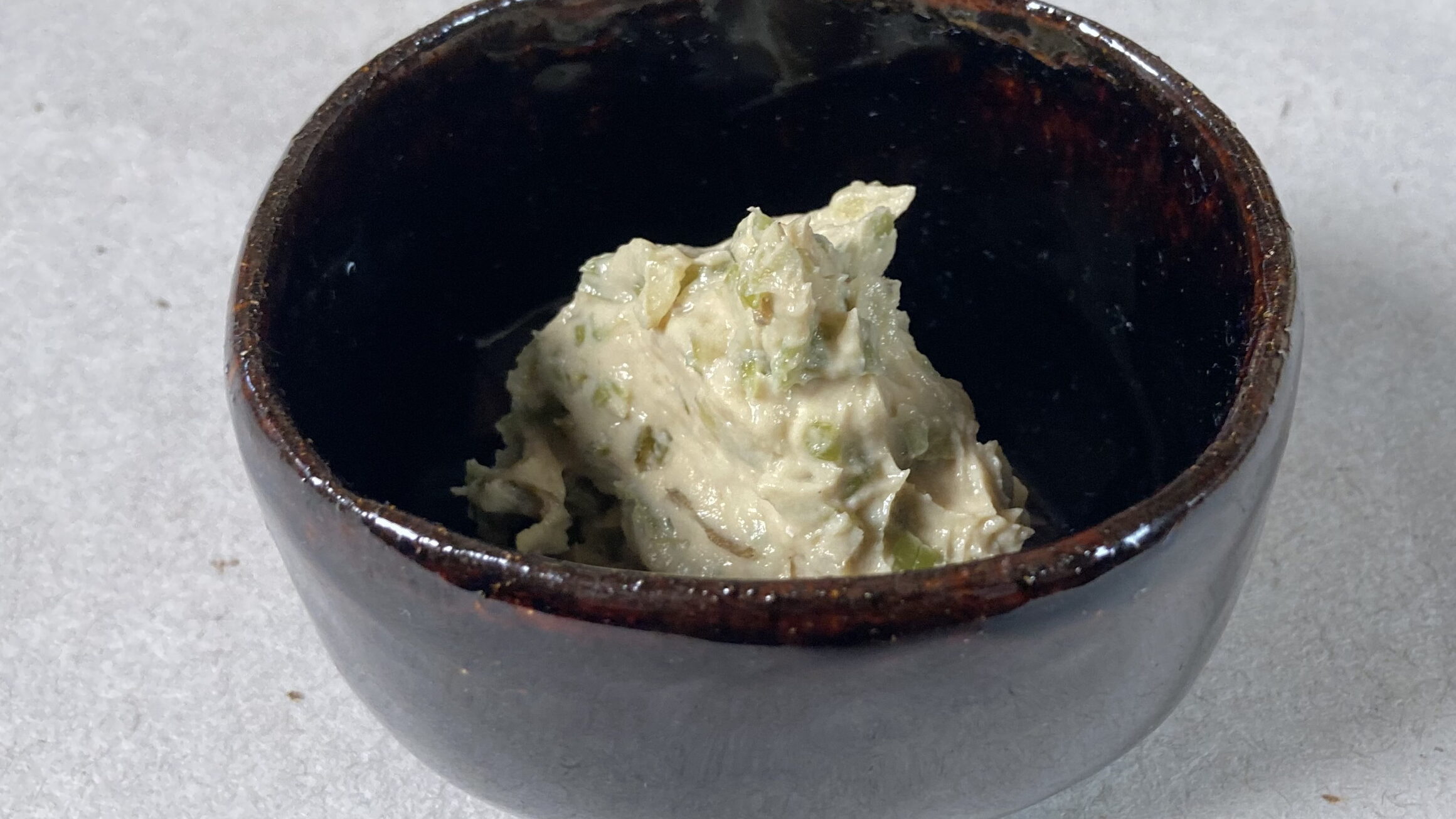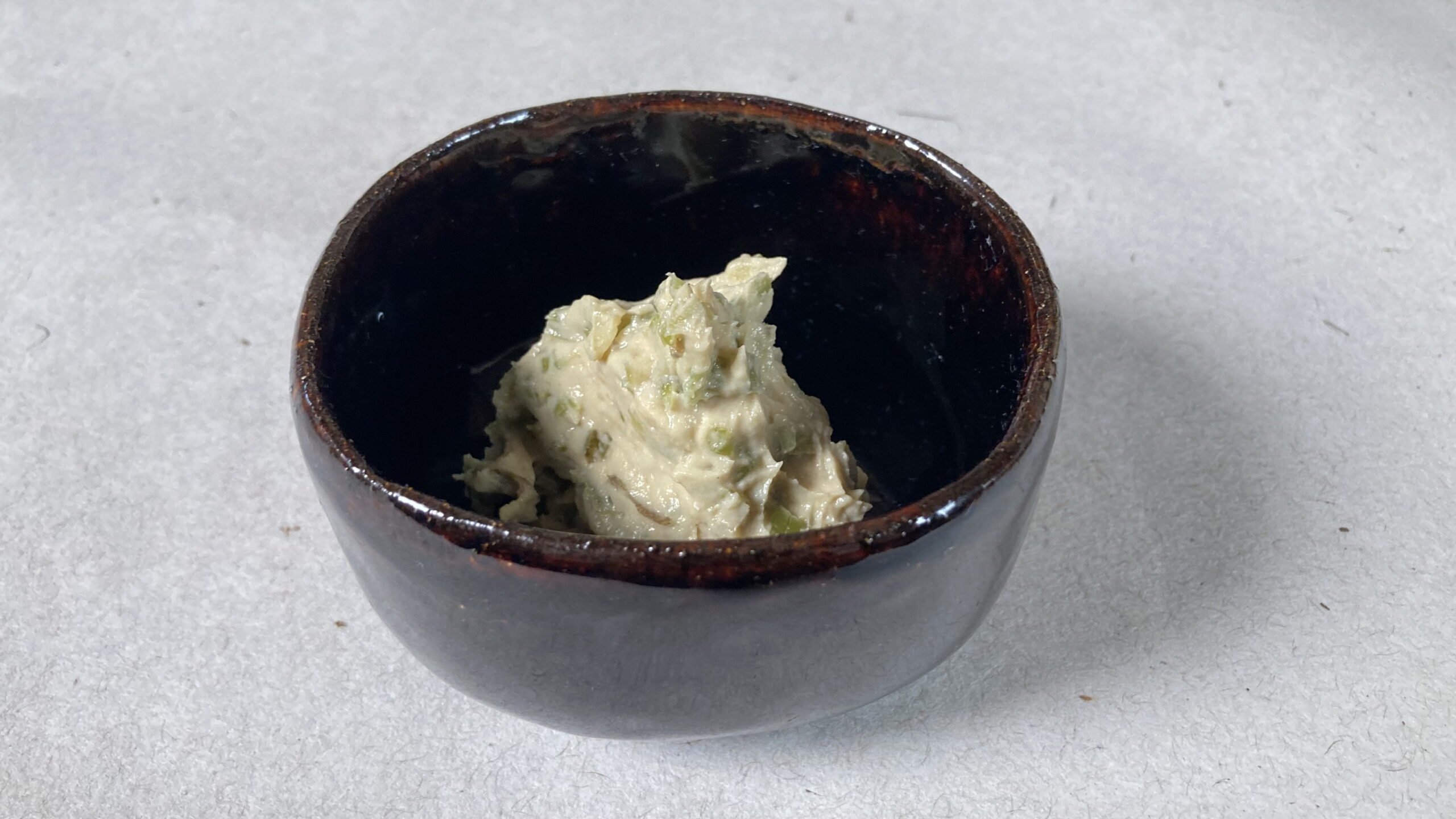
Get ready for a uniquely Japanese condiment from Shizuoka Prefecture! This flavorful creation combines the sharp, fresh taste of wasabi with the rich, slightly sweet aroma of sake lees. It’s a local specialty that packs a punch and is enjoyed in various ways.
Dish Name: Wasabizuke
- Region / Location: Shizuoka Prefecture
- Primary Area of Tradition: Central region (Shizuoka City), Izu Peninsula (Izu City), Eastern region (Gotemba City, Oyama Town)
- Main Ingredients: Wasabi
How It’s Eaten / Served
Wasabizuke is made from chopped wasabi leaves, stems, and roots that are pickled in sake lees (sake kasu). It’s a versatile condiment often enjoyed as a topping on hot rice or as an accompaniment to sake. Its characteristic sharp spiciness and the distinct flavor of sake lees make it a favorite among adults.
Cultural Background and Preservation
The origin of cultivated wasabi is traced back to the Keicho era (1596-1615) in the Utogi area of Aoi Ward, Shizuoka City, where wild wasabi, which had grown naturally on Mt. Bukkokusan, was planted near the area’s spring water source. It’s said that Tokugawa Ieyasu, who spent his later years in Sunpu Castle, prohibited the removal of wasabi from Utogi, keeping it exclusive to the area for a long time. However, in the mid-18th century, cultivation methods spread to the Izu region, and the development of the “tatami-ishi style” cultivation in the Naka-Izu area led to its widespread adoption throughout Shizuoka Prefecture and eventually across Japan.
Shizuoka Prefecture boasts the highest yield and quality of wasabi in Japan due to its abundant rainfall, unique geology, and spring water that maintains a consistent temperature of around 13°C (55°F) year-round (*). Today, wasabi is cultivated in terraced fields in mountainous areas with spring water, using minimal fertilizer. The “Traditional Cultivation of Shizuoka Water Wasabi” has been recognized as a Globally Important Agricultural Heritage System and a Japan Agricultural Heritage System.
The sale of wasabizuke is said to have started at Shizuoka Station when it opened in 1889, and it remains a popular Shizuoka souvenir to this day. It’s also a common addition to everyday meals at home. To promote the appeal of “Shizuoka Water Wasabi,” differentiate it from other regions, and preserve the traditional food culture, the “Shizuoka Water Wasabi Masterpiece” certification system has been established by the Shizuoka Wasabi Agricultural Heritage Promotion Council.
Additional information:
- Sake lees (酒粕 – sake kasu): The solid sediment left over after the fermentation and pressing of sake. It has a fruity, slightly sweet flavor and is rich in nutrients.
- Condiment: A sauce, relish, or spice added to food to enhance its flavor.
- Terraced fields (階段状のわさび田 – kaidanjō no wasabida): Fields constructed on slopes in a series of flat areas resembling steps, used for cultivation in mountainous regions.
- Globally Important Agricultural Heritage System (世界農業遺産 – sekai nōgyō isan): A designation by the Food and Agriculture Organization of the United Nations (FAO) to recognize and support outstanding landscapes of aesthetic, ecological, and cultural value that combine agricultural biodiversity, resilient ecosystems, and valuable cultural heritage.
- Japan Agricultural Heritage System (日本農業遺産 – nihon nōgyō isan): A national designation in Japan that recognizes agricultural heritage sites of significant value.
- Souvenir (土産 – omiyage): A gift or item purchased as a memento of a place visited.
The information about regional cuisine featured on this website (Piggy's Grandma of Japan) is summarized and adapted from the Ministry of Agriculture, Forestry and Fisheries of Japan (MAFF) website, "Our Regional Cuisines"Additional commentary is provided based on the unique experiences and perspectives of the site's editors.
The copyright for the original content regarding regional cuisine belongs to the Ministry of Agriculture, Forestry and Fisheries of Japan.
The summaries and adaptations published on this site are intended for informational purposes only. Piggy's Grandma of Japan does not guarantee the accuracy or completeness of this information. For the most accurate and complete details, please refer to the original pages on the MAFF website.


